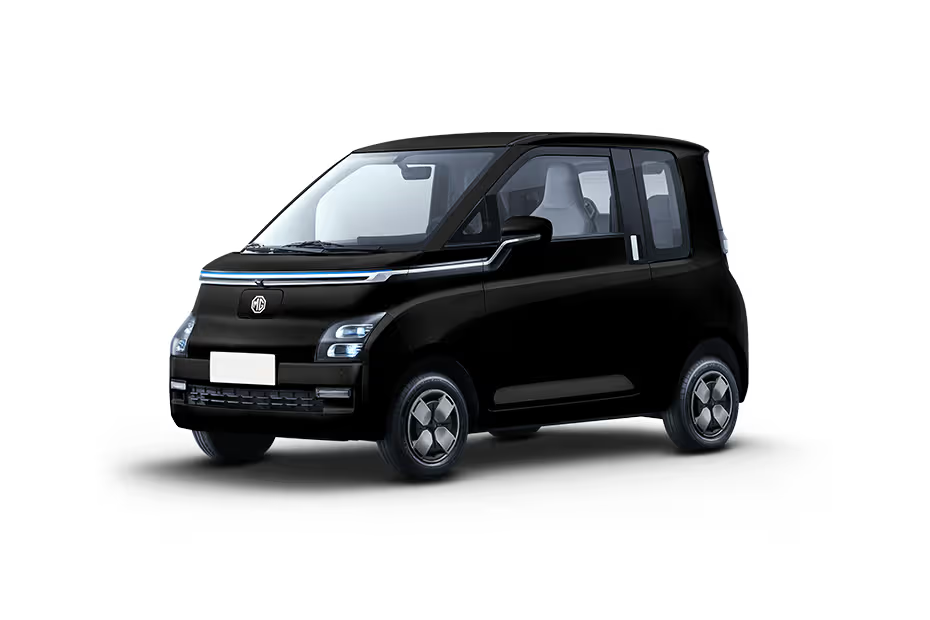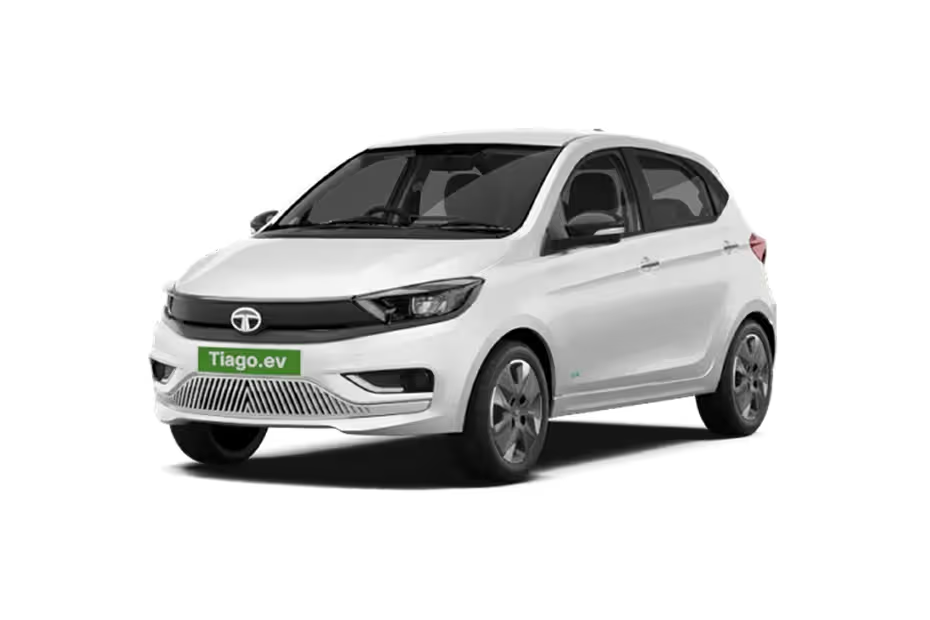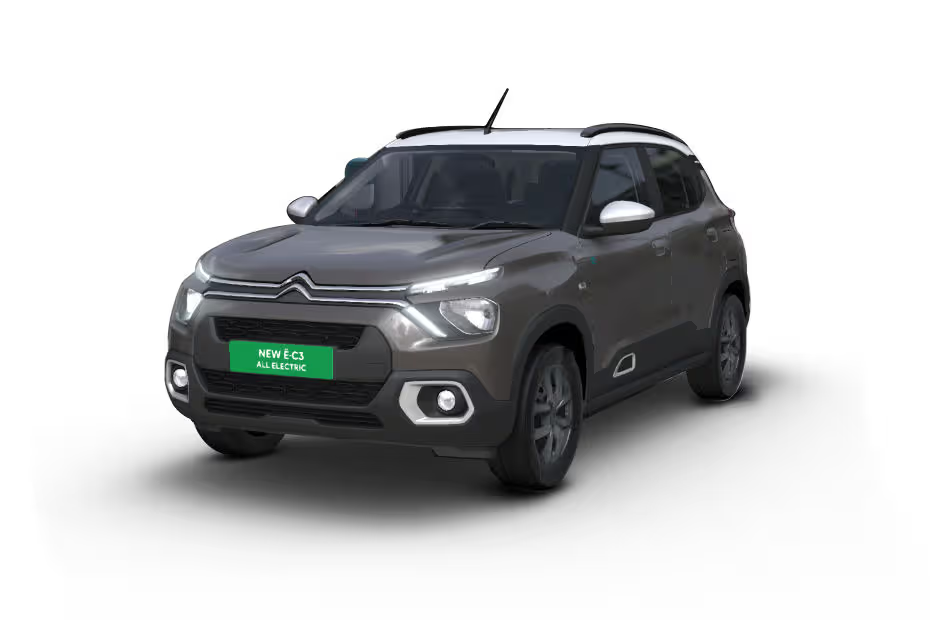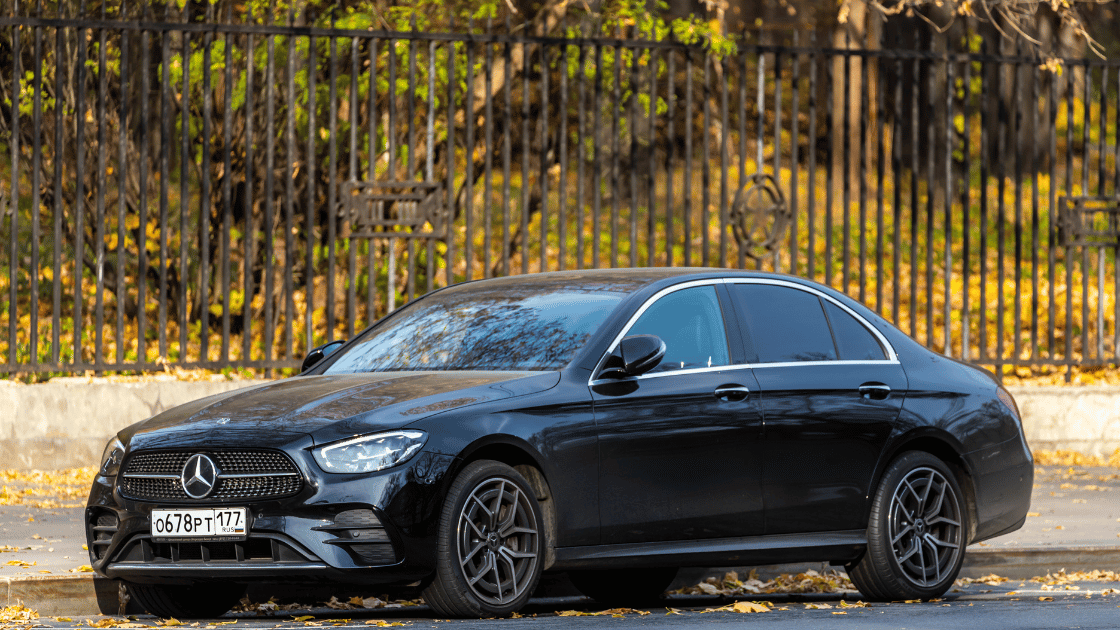The electric vehicle (EV) revolution in India is no longer a distant vision, it’s happening right now. With the Indian automotive market witnessing a paradigm shift towards sustainable mobility, electric cars are becoming a smart and accessible choice for everyday consumers. Whether you’re a daily city commuter or someone who enjoys occasional road trips, the new wave of electric cars under ₹20 lakh offers a compelling blend of performance, range, affordability, and features.
This transition has been fueled by several pressing factors. Escalating fuel prices have made traditional petrol and diesel vehicles increasingly expensive to run. Simultaneously, growing environmental concerns have created a sense of urgency among consumers and policymakers alike to reduce vehicular emissions and carbon footprints. Backed by government policies, subsidies, and improved infrastructure, electric cars are emerging as the future of mobility in India.
In this article, we’ll explore the Best Electric Cars in India Under ₹20 Lakh in 2025, focusing on models priced below ₹20 lakh that serve as perfect companions for both city driving and weekend getaways. We’ll also cover the pros and cons of EV ownership, the rising popularity of electric mobility, and tips to choose the right EV for your lifestyle. Whether you’re a first-time buyer or upgrading from a petrol vehicle, this guide will help you make an informed decision.
List of 7 Electric Cars in India Under ₹20 Lakh in 2025
Here’s the list of 7 electric cars under ₹20 lakh for 2025 that are ideal for both city commutes and occasional road trips. Each offers a solid balance of price, performance, range, and features.
- Tata Nexon EV MR (Medium Range)
- Mahindra XUV400 EC (34.5 kWh variant)
- MG Comet EV (Fully Loaded Variant)
- Tata Tiago EV LR (Long Range Variant)
- Citroën ë-C3 Shine (Top Variant)
- Tata Tigor EV XZ+
- BYD Seagull (Expected Launch by Late 2025)
Review of 7 Electric Cars in India Under ₹20 Lakh in 2025
These cars offer a mix of hatchbacks, compact SUVs, and electric sedans—all priced under ₹20 lakh (ex-showroom) and well-suited for a wide audience: city dwellers, small families, and occasional highway travelers.
Let’s dig in!
1. Tata Nexon EV MR (Medium Range)

Overview: The Tata Nexon EV MR is a compact electric SUV built on the ICE Nexon’s successful platform. Its bold SUV stance, spacious interiors, and practical boot space make it an attractive family car under ₹20 lakh.
Powertrain & Range: Powered by a 30.2 kWh lithium-ion battery, the Nexon EV MR delivers an ARAI-certified range of 325 km and a real-world range of around 250–270 km. It reaches a top speed of 120 km/h and is ideal for both city runs and weekend trips.
Charging Options: It supports both 15A home socket charging (takes ~9 hours) and 25 kW fast charging, which can juice up 0–80% in just 56 minutes.
Key Features: Includes a 10.25-inch touchscreen, wireless Android Auto/Apple CarPlay, iRA connected car tech, auto climate control, and dual airbags with ESC.
Pros: Stylish SUV feel, good range, practical boot.
Cons: Slightly stiff suspension; not the zippiest in segment.
Ideal Users: Small families, urban professionals, weekend travelers.
2. Mahindra XUV400 EV (34.5 kWh variant)

Overview: Mahindra’s first mainstream EV, the XUV400 EC, is a spacious electric SUV that’s based on the XUV300. It brings muscular design, high ground clearance, and a mature driving character.
Powertrain & Range: This EC variant comes with a 34.5 kWh battery offering a certified range of 375 km, with real-world performance between 280–300 km. The motor delivers 150 PS and top speed is 150 km/h.
Charging Options: Standard AC home charging takes 12–13 hours, while fast charging (DC) charges 0–80% in just under 50 minutes.
Key Features: 7-inch infotainment with Bluetooth, six airbags, disc brakes on all wheels, rear parking camera, and regenerative braking for energy recovery.
Pros: Powerful motor, generous cabin space, decent range.
Cons: Infotainment feels outdated; no ventilated seats.
Ideal Users: Families needing SUV comfort and highway capability.
3. MG Comet EV (Fully Loaded Variant)

Overview: The MG Comet EV is India’s most compact urban electric car with a futuristic design and tech-first cabin. While small in size, it packs big features and urban practicality.
Powertrain & Range: It features a 17.3 kWh battery with an ARAI-certified range of 230 km. In real conditions, it can deliver around 180–200 km—more than sufficient for daily city commutes. Top speed is capped at 100 km/h.
Charging Options: Only supports AC home charging (~7 hours). No DC fast charging.
Key Features: Dual 10.25-inch screens for infotainment and digital cluster, wireless Apple CarPlay, smart key, voice control, and over 55 connected features.
Pros: Extremely compact and easy to park, premium cabin.
Cons: Not suitable for highways; 2-door design limits practicality.
Ideal Users: Young professionals, college students, city commuters.
Also read: Top Hybrid Cars for Eco-Conscious Buyers 2025: Best Hybrid Cars Reviewed
4. Tata Tiago EV LR (Long Range Variant)

Overview: The Tata Tiago EV is India’s most affordable long-range electric hatchback. Based on the successful Tiago platform, it offers practicality with strong EV credentials.
Powertrain & Range: This LR variant comes with a 24 kWh battery delivering 315 km ARAI range and a real-world usage of about 220–240 km. The motor pushes out 74 PS with a 120 km/h top speed.
Charging Options: AC home charging (~6.5 hours), DC fast charging from 10–80% in about 58 minutes.
Key Features: 7-inch infotainment with Harman speakers, dual airbags, rear camera, multi-mode regen, and cruise control.
Pros: Compact, affordable, efficient.
Cons: Limited boot space; basic cabin materials.
Ideal Users: Budget-conscious city commuters, first-time EV buyers.
5. Citroën ë-C3 Shine (Top Variant)

Overview: The ë-C3 is Citroën’s entry into the EV hatchback segment. It offers SUV-like ground clearance and French design aesthetics, making it stand out in the crowd.
Powertrain & Range: Equipped with a 29.2 kWh battery and a 3-phase 57 PS motor, the ë-C3 offers a certified range of 320 km and real-world mileage of 230–250 km.
Charging Options: AC home charging takes ~10 hours; DC fast charging (25 kW) fills 10–80% in 57 minutes.
Key Features: 10.25-inch touchscreen, wireless Apple CarPlay/Android Auto, connected car tech, dual airbags, and ABS with EBD.
Pros: Good ground clearance, stylish design, decent range.
Cons: No fast charger provided as standard; lacks rear wiper.
Ideal Users: Small families, city and intercity users looking for European flair.
6. Tata Tigor EV XZ+

Overview: The Tata Tigor EV is a compact electric sedan that combines boot space, safety, and efficiency at a competitive price point under ₹13 lakh (ex-showroom).
Powertrain & Range: The 26 kWh battery delivers an ARAI range of 315 km, while real-world usage hovers around 220–240 km. Its Ziptron motor delivers 74 PS power with a top speed of 120 km/h.
Charging Options: Compatible with home AC charger (8–9 hours) and DC fast charging (~60 minutes from 10–80%).
Key Features: Harman touchscreen infotainment, dual airbags, corner stability control, regen modes, and automatic climate control.
Pros: Sleek sedan design, efficient, spacious boot.
Cons: Rear legroom could be better; conservative styling.
Ideal Users: Office-goers, families needing sedan comfort.
7. BYD Seagull (Expected Launch in 2025)

Overview: Expected to be BYD’s most affordable EV offering in India, the Seagull is a stylish hatchback with modern design and tech. If launched around ₹15–17 lakh, it could disrupt the mid-EV market.
Powertrain & Range: Expected to get a 30 kWh Blade Battery, delivering 300–350 km range and a top speed of 120–130 km/h. Real-world range is estimated at 260–280 km.
Charging Options: Expected to support fast DC charging (30 minutes to 80%) and AC wallbox charging (~7 hours).
Key Features: Likely to include touchscreen infotainment, 360-degree camera, multiple airbags, adaptive cruise control, and V2L (vehicle-to-load) support.
Pros: Global brand backing, expected premium features at budget price.
Cons: Yet to launch; actual specs may vary.
Ideal Users: Trendsetters, tech enthusiasts, highway and city mix users.
Pros and Cons of Buying an Electric Car in India
As electric cars become more mainstream in India, many buyers are evaluating their pros and cons before making the switch. While EVs offer a range of benefits, they also come with certain limitations—especially in the current stage of infrastructure and market maturity.
Advantages
Cost-Effective Long-Term Usage: Although electric vehicles may seem expensive initially, they are significantly more economical in the long run. Charging an EV costs far less per kilometer than fueling a petrol or diesel car. Moreover, EVs require minimal maintenance due to fewer moving parts—no engine oil, no clutch, and no gearbox.
Silent and Smooth Driving Experience: EVs operate almost silently, offering a serene cabin environment—perfect for Indian cities plagued with honking and traffic noise. The absence of engine vibrations also makes for a more comfortable ride.
Instant Torque Delivery Ideal for Indian Traffic: EVs deliver torque instantly from a standstill, making them highly responsive in stop-and-go traffic. Quick acceleration without gear shifts provides a smooth and nimble drive, especially useful in congested urban roads.
Tax Rebates and Subsidies: Thanks to central and state government schemes like FAME II, many electric cars come with attractive subsidies and tax exemptions. This significantly reduces the effective on-road price, making EVs more accessible to the masses.
Disadvantages
Limited Charging Infrastructure in Rural Areas: While major cities are witnessing rapid expansion of charging stations, rural and semi-urban areas still lack reliable charging infrastructure. This limits long-distance travel and ownership for people living outside metros.
Longer Refuelling Time Compared to Petrol/Diesel: Even with fast charging, EVs typically take 30 minutes to 1 hour for a significant charge, far longer than refueling a petrol vehicle. Home charging overnight is the norm, which may not suit everyone.
Initial Purchase Cost Still Higher for Premium Models: Although affordable EVs are now entering the market, models with longer range or advanced features still command a premium. Buyers must weigh the high upfront cost against future savings.
Battery Life Concerns and Resale Value: EV batteries degrade over time, and replacement costs can be high. Though technology is improving, battery lifespan and resale value remain concerns for many cautious buyers.
Who Should Consider Buying an Electric Car in 2025?
Electric cars are no longer just for the environmentally conscious elite. In 2025, a wide variety of Indian consumers can benefit from making the switch to EVs, especially with affordable options under ₹20 lakh now entering the market. Here’s a breakdown of who should seriously consider buying an electric car this year:
Urban Commuters Seeking Fuel Savings
If you drive daily in city traffic, the low running cost of EVs can save you thousands each year. With regenerative braking and high efficiency at low speeds, EVs are built for the urban lifestyle.
Environmentally Conscious Families
Families looking to reduce their carbon footprint without compromising on safety or features will find EVs an excellent option. Most models now offer modern infotainment, airbags, and comfort amenities.
Office-Goers With Short-to-Medium Daily Commutes
If your daily travel is between 20 and 80 km, an electric car fits perfectly. You can charge overnight at home and avoid frequent trips to the petrol pump.
Fleet Owners and Cab Services
EVs make strong financial sense for ride-hailing services and corporate fleets due to their lower maintenance and fuel costs. Many EVs now offer 250–300 km range, ideal for city-based operations.
Road Trip Enthusiasts Using EVs With 250+ km Range
New-age EVs offer reliable highway range and fast-charging capabilities. If you travel inter-city occasionally, models like the Tata Tiago EV LR or Citroën ë-C3 can easily handle weekend getaways.
In short, if your driving habits align with the evolving EV ecosystem, there’s never been a better time to switch.
How India’s Auto Industry is Shifting Toward EVs
India’s automobile industry is undergoing a transformative shift toward electric vehicles, driven by a mix of government policy, consumer demand, and strategic investments by major players. Leading domestic automakers like Tata Motors and Mahindra have ramped up their electric vehicle portfolios, launching competitive models such as the Tata Nexon EV and Mahindra XUV400. International brands like Hyundai and MG are also investing heavily in India’s EV segment, aiming to capture a growing market share.
The government’s push for local battery manufacturing is a key component of this shift. India is building a robust battery manufacturing ecosystem to reduce dependence on imports and bring down EV costs. Several battery gigafactories are planned or underway, which will support production for the Best Electric Cars in India Under ₹20 Lakh and higher segments.
India’s ambitious target to achieve 30% electric vehicle penetration by 2030 is accelerating this change. Alongside established manufacturers, EV startups and technology innovators are playing a vital role, introducing new models and advanced features that appeal to Indian consumers. These startups are helping diversify choices in the sub-₹20 lakh category, making EVs more accessible.
The combined impact of these investments, policies, and innovations is driving the market toward cleaner, more affordable electric mobility. The growing availability of the Best Electric Cars in India Under ₹20 Lakh is a testament to this industry’s evolution, making EVs a practical and sustainable option for the average Indian consumer.
What to Expect from EVs in the Next 5 Years: Electric Vehicles in India
The future of electric vehicles in India looks promising, especially in the affordable segment, with the Best Electric Cars in India Under ₹20 Lakh expected to become more appealing and practical. One of the biggest advancements will be in battery technology—improvements in energy density, battery life, and cost reduction will lead to longer ranges and more affordable EVs, closing the gap with petrol and diesel vehicles in terms of price.
We can also anticipate a widespread expansion of fast-charging infrastructure, addressing the current limitations and making EV ownership more convenient for city and highway use. This will be particularly beneficial for owners of electric cars under ₹20 lakh, who rely on quick top-ups during daily commutes or road trips.
The used EV market is expected to evolve as well, providing budget-friendly options and encouraging wider adoption among first-time buyers. Furthermore, the next five years will bring exciting new models from both established players and startups, further enhancing the choice of Best Electric Cars in India Under ₹20 Lakh.
In summary, with better technology, improved infrastructure, and competitive pricing, electric vehicles will become an even more attractive proposition for Indian consumers. This transformation will redefine mobility, making clean and efficient transport accessible to a larger population segment.
Final Thoughts: Why the Best Electric Cars in India Under ₹20 Lakh Are the Smart Choice for 2025
As India rapidly embraces green mobility, electric cars have emerged as not just eco-friendly solutions but smart financial decisions too. With rising fuel prices and generous government subsidies, the Best Electric Cars in India Under ₹20 Lakh offer an ideal balance of affordability, sustainability, and modern convenience.
These electric vehicles are no longer just futuristic concepts. They are practical, daily companions for urban commuting and even weekend road trips—offering quiet rides, instant torque, and lower running costs. Whether you’re a first-time car buyer, a working professional, or a small family, there’s now an EV that fits your lifestyle and budget.
The EV revolution is well underway, and with ongoing improvements in range, battery tech, and infrastructure, the future of driving in India is electric. Choosing any of the Best Electric Cars in India Under ₹20 Lakh means you’re not just saving money—you’re also investing in a cleaner, smarter future.
Now is the perfect time to switch gears and join the electric movement.







